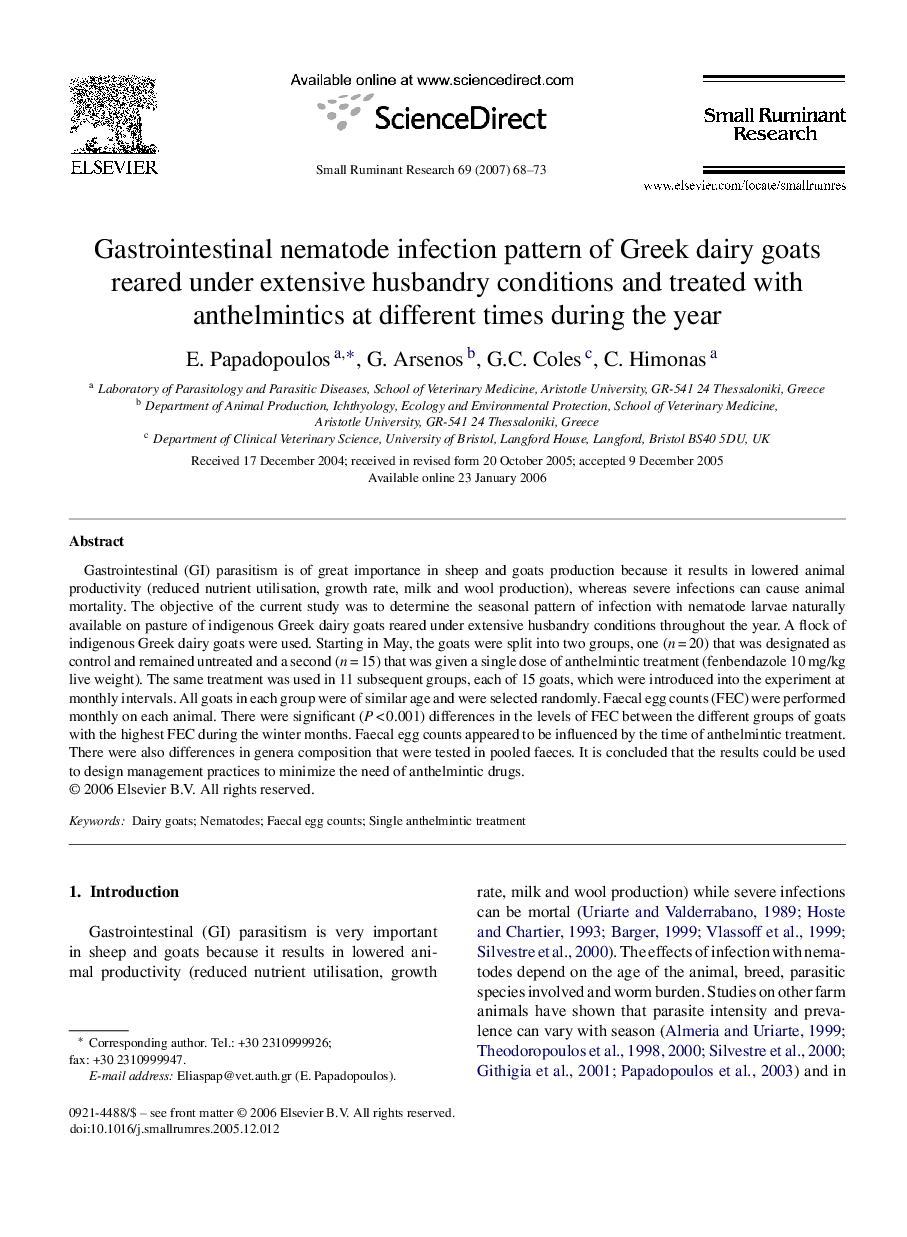| Article ID | Journal | Published Year | Pages | File Type |
|---|---|---|---|---|
| 2458289 | Small Ruminant Research | 2007 | 6 Pages |
Gastrointestinal (GI) parasitism is of great importance in sheep and goats production because it results in lowered animal productivity (reduced nutrient utilisation, growth rate, milk and wool production), whereas severe infections can cause animal mortality. The objective of the current study was to determine the seasonal pattern of infection with nematode larvae naturally available on pasture of indigenous Greek dairy goats reared under extensive husbandry conditions throughout the year. A flock of indigenous Greek dairy goats were used. Starting in May, the goats were split into two groups, one (n = 20) that was designated as control and remained untreated and a second (n = 15) that was given a single dose of anthelmintic treatment (fenbendazole 10 mg/kg live weight). The same treatment was used in 11 subsequent groups, each of 15 goats, which were introduced into the experiment at monthly intervals. All goats in each group were of similar age and were selected randomly. Faecal egg counts (FEC) were performed monthly on each animal. There were significant (P < 0.001) differences in the levels of FEC between the different groups of goats with the highest FEC during the winter months. Faecal egg counts appeared to be influenced by the time of anthelmintic treatment. There were also differences in genera composition that were tested in pooled faeces. It is concluded that the results could be used to design management practices to minimize the need of anthelmintic drugs.
